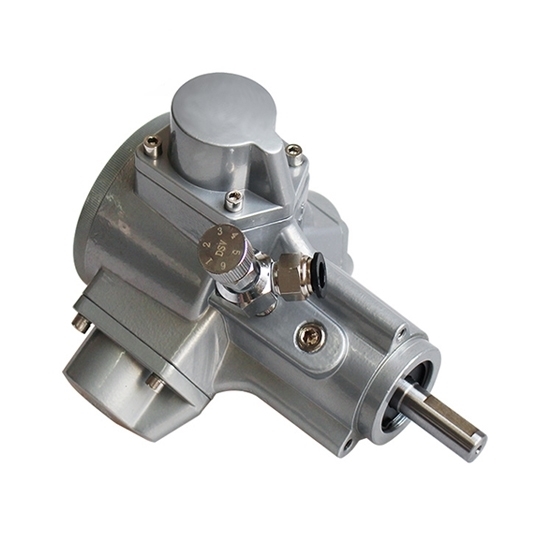Air Motor Troubleshooting
The air motor is mainly composed of stators, rotors, vanes and other parts. There are air distribution slots or holes for intake and exhaust on the stator, and long slots are milled on the rotor, and there are blades in the slots. The two ends of the stator are provided with sealing covers, and the sealing covers are provided with arc-shaped grooves which communicate with the inlet and exhaust holes and the bottom of the blade. The rotor and stator are eccentrically installed. In this way, several sealed working volumes are formed by the outer surface of the rotor, the blades (between the two blades), the inner surface of the stator and the two sealing end covers.
Common faults and troubleshooting methods of air motors:
Essentials of system maintenance of air motor
- Ensure the supply of clean compressed air, air motor usually contains impurities such as moisture, oil and dust. Moisture will corrode pipes, valves and cylinders of pneumatic motor; oil will deteriorate rubber, plastics and sealing materials; dust will cause valve body failure. Selecting a suitable filter for air motor can remove impurities in the compressed air. When using the filter, the accumulated liquid should be removed in time.
- Keep the airtightness of the system of air motor: Air leakage not only increases the energy consumption, but also leads to a drop in the air supply pressure, and even causes the pneumatic components to work abnormally. Severe air leakage is easy to detect when the pneumatic system stops running, and the sound caused by air leakage is easy to detect; for minor air leakage, use the instrument or use soapy water to check.
- Ensure the sensitivity of moving parts in pneumatic components of air motor: The compressed air discharged from the air compressor contains compressor oil particles with a particle size of 0.01-0.08μm. At the high temperature of the exhaust temperature of 120-220ºC, these oil particles. Pneumatic motor will oxidize rapidly. After oxidation, the color of the oil particles will become darker, the viscosity will increase, and gradually solidify from liquid to sludge. Such particles below the μm level cannot be filtered out by ordinary filters. When they enter the reversing valve, they will be attached to the valve core, so that the sensitivity of the valve will gradually decrease, and even the action will fail. In order to remove the sludge and ensure the sensitivity, an oil mist separator can be installed after the filter of the pneumatic system to separate the sludge. In addition, regular valve cleaning can also ensure valve sensitivity.
- Ensure that the pneumatic device has suitable working pressure and movement speed. When adjusting the working pressure, the pressure gauge should work reliably and read accurately. After the pressure reducing valve and throttle valve are adjusted, the pressure regulating valve cover or lock nut of pneumatic motor must be tightened to prevent loosening.
- Ensure that the pneumatic device of pneumatic motor has suitable working pressure and movement speed. When adjusting the working pressure, the pressure gauge should work reliably and read accurately. After the pressure reducing valve and throttle valve are adjusted, the pressure regulating valve cover or lock nut of must be tightened to prevent loosening.
Most pneumatic motors and control elements require appropriate lubrication. If the lubrication is poor, the following failures will occur:
- Due to the air motor's increase of frictional resistance, the cylinder thrust is insufficient, and the valve core action fails;
- Air leakage due to wear of the sealing material;
- Due to rust causing damage to components and malfunction. The method of lubrication is generally to use a lubricator for spray lubrication, and the lubricator is generally installed after the filter and the pressure reducing valve.
Spot check and regular check of pneumatic system of air motor
- Inspection of piping system: The main content of air motor is the management of condensed water and lubricating oil. Drainage of condensed water should generally be carried out before the operation of the pneumatic device. However, when the night temperature is lower than 0°C, in order to prevent the condensate from freezing, the drain valve should be opened to discharge the condensate after the operation of the air motor device. When replenishing lubricating oil, check whether the quality and dripping oil in the lubricator meet the requirements. In addition, the spot check should also include checking whether the air supply pressure is normal and whether there is air leakage.
- Regular inspection of pneumatic components: The main content is to thoroughly deal with the leakage phenomenon of the air motor's system. For example, replace sealing components, deal with loose fittings or connecting screws, etc., and regularly inspect measuring instruments, safety valves and pressure relays.

